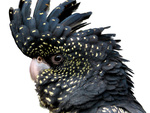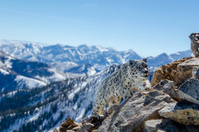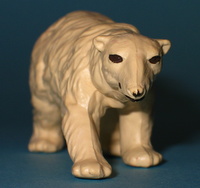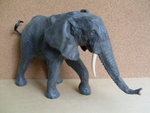| | Mathison Museum of Natural History |  |
|
+17Birdsage Bonnie Saarlooswolfhound widukind Joliezac spacelab Pardofelis landrover Megaptera lucky luke rogerpgvg Jill George pipsxlch Duck-Anch-Amun Kikimalou Roger 21 posters |
|
| Author | Message |
|---|
Caracal

Country/State : France
Age : 65
Joined : 2018-10-24
Posts : 7252
 |  Subject: Re: Mathison Museum of Natural History Subject: Re: Mathison Museum of Natural History  Wed Jan 19, 2022 1:53 pm Wed Jan 19, 2022 1:53 pm | |
| It looks he has fangs!  |
|
  | |
widukind

Country/State : Germany
Age : 48
Joined : 2010-12-30
Posts : 45745
 |  Subject: Re: Mathison Museum of Natural History Subject: Re: Mathison Museum of Natural History  Wed Jan 19, 2022 4:05 pm Wed Jan 19, 2022 4:05 pm | |
| |
|
  | |
lucky luke

Country/State : FRANCE Saint-Louis
Age : 62
Joined : 2010-07-17
Posts : 6296
 |  Subject: Re: Mathison Museum of Natural History Subject: Re: Mathison Museum of Natural History  Thu Jan 20, 2022 11:58 am Thu Jan 20, 2022 11:58 am | |
| |
|
  | |
bmathison1972

Country/State : Salt Lake City, UT
Age : 52
Joined : 2010-04-13
Posts : 6710
 |  Subject: Re: Mathison Museum of Natural History Subject: Re: Mathison Museum of Natural History  Thu Jan 20, 2022 12:37 pm Thu Jan 20, 2022 12:37 pm | |
| Species: Urodacus armatus Pocock, 1888 (yellow sand scorpion; inland desert scorpion) About the Figure: Manufacturer: Cadbury Series: UK Yowies Series 1; Yowies Series 3 Years of Production: 1997; 1999 Size/Scale: Length of Australian figure (not body length) 7.5 cm; carapace length 1.5 cm for a scale of 2.8:1-1.5:1. Length of UK figure (not body length) 4.5 cm; carapace length 1.0 cm for a scale of 2:1-1:1. Scale should be taken with caution as both figures are somewhat stylized. Frequency of species in toy/figure form (at time of posting): Very rare Miscellaneous Notes: The figure on the left is the Australian release from 1999; it requires assembly. The one on the right is the UK release from 1997; it is a solid piece of PVC. The UK figure was not marketed at the species level, and I have allied it with the Australian figure since it was the only scorpion produced in the Yowies series, even though the two were not released in corresponding sets. About the Animal: Geographic distribution: Southern and central Australia Habitat: Deserts, sand dunes; usually in sandy areas with rocky cover Diet: Arthropods IUCN Status (at time of posting): Not Evaluated Miscellaneous Notes: Urodacus armatus is a burrowing species. Burrows usually occur under rocks; they are loosely spiraling and about 36 cm deep. [You must be registered and logged in to see this image.] |
|
  | |
widukind

Country/State : Germany
Age : 48
Joined : 2010-12-30
Posts : 45745
 |  Subject: Re: Mathison Museum of Natural History Subject: Re: Mathison Museum of Natural History  Thu Jan 20, 2022 5:58 pm Thu Jan 20, 2022 5:58 pm | |
| |
|
  | |
Caracal

Country/State : France
Age : 65
Joined : 2018-10-24
Posts : 7252
 | |
  | |
bmathison1972

Country/State : Salt Lake City, UT
Age : 52
Joined : 2010-04-13
Posts : 6710
 |  Subject: Re: Mathison Museum of Natural History Subject: Re: Mathison Museum of Natural History  Fri Jan 21, 2022 12:41 pm Fri Jan 21, 2022 12:41 pm | |
| Species: † Regaliceratops peterhewsi Brown et Henderson, 2015 About the Figure: Manufacturer: Safari Ltd. Series: Wild Safari Prehistoric World Year of Production: 2018 Size/Scale: Body length (excluding nasal horn) about 16.0 cm for a scale of approximately 1:25-1:32 Frequency of species in toy/figure (at time of posting): Very rare Miscellaneous Notes: Although having only been formally described in 2015, there are three standard-sized figures of this species available. The other two were made by CollectA (2017) and Creative Beast (2021), the latter of which requires minimal assembly and is articulated. About the Animal: Geographic distribution: Late Cretaceous (Middle Maastrichtian) of present-day Canada Habitat: Forests, swamps, grasslands, riparian areas Diet: Plants IUCN Status (at time of posting): N/A [prehistoric] Miscellaneous Notes: Regaliceratops peterhewsi is known only from the holotype skull, which was discovered in the St. Mary River Formation in Alberta, Canada. Still, the skull is almost complete and well-preserved, giving us a fairly good idea of what at least the head of the animal looked like. [You must be registered and logged in to see this image.] |
|
  | |
Caracal

Country/State : France
Age : 65
Joined : 2018-10-24
Posts : 7252
 | |
  | |
bmathison1972

Country/State : Salt Lake City, UT
Age : 52
Joined : 2010-04-13
Posts : 6710
 |  Subject: Re: Mathison Museum of Natural History Subject: Re: Mathison Museum of Natural History  Sat Jan 22, 2022 2:28 pm Sat Jan 22, 2022 2:28 pm | |
| Species: Ornithodoros sp. (soft tick) About the Figure: Manufacturer: Play Visions Series: Fleas, Lice, and Ticks Year of Production: 1996 Size/Scale: Body length 3.5 cm. Scale species dependent but figure 4.3:1 for the larger species Frequency of species in toy/figure form (at time of posting): Unique Miscellaneous Notes: This figure was stamped as a 'chigger', which is a misidentification. Adult soft ticks are not very diverse morphologically, and this figure could represent any one of several genera. In keeping with the theme of the collection, the designation of Ornithodoros is my own, as it is the most medically-important genus. About the Animal: Geographic distribution: Much of the world in tropical and temperate climates; medically important species occur in western and southern North America, Central and South America, Caribbean, Africa, Mediterranean Europe, Middle East, and Central Asia Habitat: Highly variable, usually in secluded areas such as rodent and tortoise burrows, caves, and crevices in abandoned or poorly-maintained manmade structures (e.g., rustic cabins) Diet: Blood of reptiles, birds, and mammals IUCN Status (at time of posting): N/A [species-dependent, but probably all are Not Evaluated] Miscellaneous Notes: The primary medical importance of ticks in the genus Ornithodoros is the transmission of tick-borne relapsing fever spirochetes in the genus Borrelia. [You must be registered and logged in to see this image.] |
|
  | |
widukind

Country/State : Germany
Age : 48
Joined : 2010-12-30
Posts : 45745
 |  Subject: Re: Mathison Museum of Natural History Subject: Re: Mathison Museum of Natural History  Sat Jan 22, 2022 4:13 pm Sat Jan 22, 2022 4:13 pm | |
| |
|
  | |
bmathison1972

Country/State : Salt Lake City, UT
Age : 52
Joined : 2010-04-13
Posts : 6710
 |  Subject: Re: Mathison Museum of Natural History Subject: Re: Mathison Museum of Natural History  Sun Jan 23, 2022 2:52 pm Sun Jan 23, 2022 2:52 pm | |
| Species: Reticulitermes sp. (subterranean termite) About the Figure: Manufacturer: Club Earth Series: Ants and Termites Year of Production: unknown Size/Scale: Body length (to the tips of the wings) 5.0 cm for a scale of 5:1 Frequency of species in toy/figure form (at time of posting): Unique Miscellaneous Notes: This figure was only marked as a 'subterranean termite' and can represent any one of a number of species. Other figures in the collection represented North American taxa, but that still leaves seven options. It was probably based on either R. flavipes (eastern subterranean termite) or R. hesperus (western subterranean termite). About the Animal: Geographic distribution: Holarctic Habitat: Highly variable; colonies are usually built underground, with shelter tubes made of soil connecting the colony to feeding sites, such as dead or living trees and wood in manmade structures Diet: Wood IUCN Status (at time of posting): Not Evaluated Miscellaneous Notes: Although Reticulitermes species eat wood, they cannot digest wood on their own. The termites rely on symbiotic protozoans, bacteria, and archaea to help break down the wood. Termites do possess cellulases in their midgut, which release some glucose for immediate absorption, but the remainder of the wood goes to the hindgut where it is processed by the symbionts. Symbionts break down lignocellulose into simple sugars and short-chain fatty acids; the symbionts use the simple sugars for their own needs and the fatty acids are taken up by the termite host. Most xylanase, endoglucanase, and exoglucanase activity occurs in the hindgut and is attributed to the symbionts. Termites are not born with their endosymbionts; they acquire them from feeding on anal fluids from adult members of the colony. [You must be registered and logged in to see this image.] |
|
  | |
widukind

Country/State : Germany
Age : 48
Joined : 2010-12-30
Posts : 45745
 |  Subject: Re: Mathison Museum of Natural History Subject: Re: Mathison Museum of Natural History  Sun Jan 23, 2022 2:55 pm Sun Jan 23, 2022 2:55 pm | |
| |
|
  | |
Caracal

Country/State : France
Age : 65
Joined : 2018-10-24
Posts : 7252
 | |
  | |
bmathison1972

Country/State : Salt Lake City, UT
Age : 52
Joined : 2010-04-13
Posts : 6710
 |  Subject: Re: Mathison Museum of Natural History Subject: Re: Mathison Museum of Natural History  Mon Jan 24, 2022 1:16 pm Mon Jan 24, 2022 1:16 pm | |
| Species: Daphnia pulex Leydig, 1860 (water flea) About the Figure: Manufacturer: Kaiyodo Series: Enoshima Aquarium Year of Production: 2011 Size/Scale: Bottlecap base 3.5 cm. Total figure height (including base) 6.0 cm. Body length 3.0 cm for a scale of 150:1-10:1 Frequency of species in toy/figure form (at time of posting): Uncommon to rare Miscellaneous Notes: Some assembly is required and the animal is removable from its base (see inset). About the Animal: Geographic distribution: Cosmopolitan Habitat: Still freshwater, including ponds, lakes, swamps, ephemeral pools, poorly-maintained swimming pools Diet: Phytoplankton, algae, bacteria, detritus IUCN Status (at time of posting): Not Evaluated Miscellaneous Notes: Daphnia pulex can reproduce both sexually and asexually by parthenogenesis. Asexual reproduction usually takes place in the summer when nutritive resources are abundant. Sexual reproduction usually occurs in the winter months or during periods of overcrowding, accumulation of wastes, and when food is less available. [You must be registered and logged in to see this image.] |
|
  | |
Caracal

Country/State : France
Age : 65
Joined : 2018-10-24
Posts : 7252
 | |
  | |
bmathison1972

Country/State : Salt Lake City, UT
Age : 52
Joined : 2010-04-13
Posts : 6710
 |  Subject: Re: Mathison Museum of Natural History Subject: Re: Mathison Museum of Natural History  Tue Jan 25, 2022 12:50 pm Tue Jan 25, 2022 12:50 pm | |
| Species: Vespa mandarinia Smith, 1852 (Asian giant hornet) About the Figure: Manufacturer: Re-Ment Series: Insect Kingdom Magnets Year of Production: 2010 Size/Scale: Body length 4.0 cm, within scale 1:1 Frequency of species in toy/figure form (at time of posting): Uncommon Miscellaneous Notes: This is the second time we have seen V. mandarinia in the Museum. As the name of the set implies, figures in this set have a (relatively non-obtrusive) magnet on the ventral side, allowing them to adhere to vertical metal surfaces. About the Animal: Geographic distribution: Southeast Asia, Japan; recently established in the Pacific Northwest of North America Habitat: Forests Diet: Larvae are feed insects provided by adults; adults are predaceous on insects, but will also eat tree sap and overripe fruit. Adults will also eat Vespa amino acid mixture produced by the larvae. IUCN Status (at time of posting): Not Evaluated Miscellaneous Notes: Vespa mandarinia has one of the most potent stings of any wasp, even for those without allergies. The venom contains a mastoparan (a cytolytic peptide) that damages tissues by stimulating a phospholipase action. It has been estimated that about 40 people a year die from V. mandarinia stings in Japan alone; those deaths have been attributed to kidney failure, anaphylactic shock, heart attack, and multi-organ failure, usually after multiple stings. [You must be registered and logged in to see this image.] |
|
  | |
widukind

Country/State : Germany
Age : 48
Joined : 2010-12-30
Posts : 45745
 |  Subject: Re: Mathison Museum of Natural History Subject: Re: Mathison Museum of Natural History  Tue Jan 25, 2022 5:56 pm Tue Jan 25, 2022 5:56 pm | |
| |
|
  | |
Caracal

Country/State : France
Age : 65
Joined : 2018-10-24
Posts : 7252
 |  Subject: Re: Mathison Museum of Natural History Subject: Re: Mathison Museum of Natural History  Tue Jan 25, 2022 9:04 pm Tue Jan 25, 2022 9:04 pm | |
| |
|
  | |
bmathison1972

Country/State : Salt Lake City, UT
Age : 52
Joined : 2010-04-13
Posts : 6710
 |  Subject: Re: Mathison Museum of Natural History Subject: Re: Mathison Museum of Natural History  Wed Jan 26, 2022 12:35 pm Wed Jan 26, 2022 12:35 pm | |
| Species: Antilope cervicapra (Linnaeus, 1758) (blackbuck) About the Figure: Manufacturer: CollectA Series: Wildlife Year of Production: 2013 Size/Scale: Height at shoulder 4.5 cm for a scale of 1:16.4-1:18.6 Frequency of species in toy/figure form (at time of posting): Very rare Miscellaneous Notes: In 2018 Colorata would make a miniature version of this species for their Oriental Region box set (which might actually scale better with many standard-sized animal figures; I don't have it so I am not sure). About the Animal: Geographic distribution: Indian Subcontinent Habitat: Dry deciduous forests, open woodlands, semi-deserts, thornscrub Diet: Grasses, cereals IUCN Status (at time of posting): Least Concern Miscellaneous Notes: Antilope cervicapra shows sexual dimorphism with regards to color; it's one of the few antelope species that do. As the common name suggests, it is the male that is mostly black. The females, which may or may not have horns, are mostly yellow-beige. [You must be registered and logged in to see this image.] |
|
  | |
Joliezac

Country/State : New Jersey, USA
Age : 22
Joined : 2021-04-26
Posts : 2428
 |  Subject: Re: Mathison Museum of Natural History Subject: Re: Mathison Museum of Natural History  Wed Jan 26, 2022 2:40 pm Wed Jan 26, 2022 2:40 pm | |
| Gorgeous antelope!!
_________________
Jolie
Animal Ark Website
Animal Figure Photography Website
|
|
  | |
rogerpgvg

Country/State : UK
Age : 54
Joined : 2016-04-29
Posts : 3894
 |  Subject: Re: Mathison Museum of Natural History Subject: Re: Mathison Museum of Natural History  Wed Jan 26, 2022 6:45 pm Wed Jan 26, 2022 6:45 pm | |
| Surprising that no other main company has made it. The Colorata blackbuck has a 2.8 cm shoulder height, so probably a bit small together with standard-sized figures. |
|
  | |
Caracal

Country/State : France
Age : 65
Joined : 2018-10-24
Posts : 7252
 | |
  | |
widukind

Country/State : Germany
Age : 48
Joined : 2010-12-30
Posts : 45745
 |  Subject: Re: Mathison Museum of Natural History Subject: Re: Mathison Museum of Natural History  Wed Jan 26, 2022 8:00 pm Wed Jan 26, 2022 8:00 pm | |
| |
|
  | |
bmathison1972

Country/State : Salt Lake City, UT
Age : 52
Joined : 2010-04-13
Posts : 6710
 |  Subject: Re: Mathison Museum of Natural History Subject: Re: Mathison Museum of Natural History  Thu Jan 27, 2022 1:39 pm Thu Jan 27, 2022 1:39 pm | |
| Species: Beckius beccarii koletta (Voirin, 1978) About the Figure: Manufacturer: Sega Series: Mushi King - standard series, small Year of Production: unknown Size/Scale: Body length (including cephalic horn) 5.0 cm for a scale of 1:1-1:1.5 (closer to 1:1.5 for a major male) Frequency of species in toy/figure form (at time of posting): Very rare (see below) Miscellaneous Notes: This species was marketed as B. koletta, although that species is usually considered a synonym of B. beccarii, which has been made a couple times before; the DeAgostini figure was highlighted in the Museum on July 6, 2021, and in hindsight, that figure might also have been painted after B. b. koletta. This particular Sega collection also has the nominate form, and it will be reviewed on the Museum at a later date. The Sega 'small standard series' were 10 sets of 10 figures each, for a total of 100 figures representing roughly 75 species of Lucanidae and dynastine Scarabaeidae. The dates of release are currently unknown to me (c. 2008). The figures were produced in conjunction with Bandai and came with Pokemon-style playing cards. At the time of this writing, I think I have all but two of the species. For a review of the sets, please see here. About the Animal: Geographic distribution: New Guinea Habitat: Rainforests Diet: Larvae develop in rotting wood; adults feed on tree sap IUCN Status (at time of posting): Not Evaluated Miscellaneous Notes: Beckius beccarii koletta was originally described in the related genus Eupatorus. Both B. b. koletta and the nominate subspecies occur on the island of New Guinea. Beckius b. beccari has orangish elytra with a dark midline, while B. b. koletta has solid dark brown elytra. I have had trouble researching information on this species complex and I am unaware of intergrades or areas of geographic or ecological overlap between the populations. [You must be registered and logged in to see this image.] |
|
  | |
landrover

Country/State : colombia
Age : 66
Joined : 2010-11-04
Posts : 5890
 | |
  | |
Sponsored content
 |  Subject: Re: Mathison Museum of Natural History Subject: Re: Mathison Museum of Natural History  | |
| |
|
  | |
| | Mathison Museum of Natural History |  |
|
